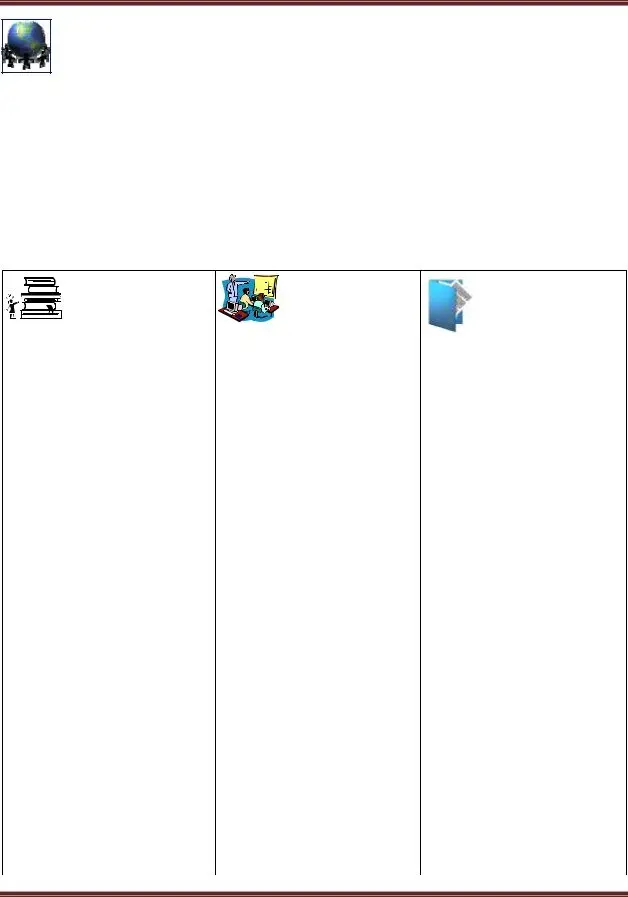In April 2011, the OSHA Directorate of Training and Education released a comprehensive Instructor Guide targeting one of the construction industry's most significant hazards: electrocution. The document, titled "Construction Focus Four: Electrocution Hazards," serves as an essential piece of the educational puzzle, aiming to curtail the incidence of electrocution-related injuries and fatalities on construction sites. As part of the 4-hour block covering the "Focus Four Hazards" (Falls, Caught-In or -Between, Struck-By, and Electrocution), this section dedicates substantial effort to discussing the various facets of electrocution hazards, ranging from identifying what these hazards are, including contact with power lines and improper use of extension cords, to outlining employer responsibilities in mitigating these risks. It not only equips trainers with a multitude of resources, including a detailed lesson plan and appendices filled with tests, activities, and fatal facts, but also encourages a dynamic learning environment through interactive sessions and a focus on practical application. Measures such as maintaining a safe distance from overhead power lines, the utilization of ground-fault circuit interrupters (GFCIs), and adhering to lockout/tagout procedures form the crux of personal protective strategies emphasized within the guide. Additionally, it underscores the obligation of employers to enforce these safety measures through rigorous training, equipment maintenance, and the implementation of comprehensive electrical safety programs. Hence, this guide not only serves as a testament to OSHA's commitment to workplace safety but also as a crucial tool in the ongoing effort to educate and protect workers from one of the most perilous aspects of construction work.
| Question | Answer |
|---|---|
| Form Name | Electrocution Hazards Form |
| Form Length | 82 pages |
| Fillable? | No |
| Fillable fields | 0 |
| Avg. time to fill out | 20 min 30 sec |
| Other names | construction focus four electrocution, electrocution hazards, construction hazards guide, osha construction focus four electrocution |

ConstructionOSHA Trai ing Institute
Focus Four: Electrocution Hazards
INSTRUCTOR GUIDE
OSHA Directorate of Training and Education
April 2011

Construction Focus Four: Electrocution Hazards |
|
TABLE OF CONTENTS |
|
TRAINER PREPARATION GUIDANCE |
i |
Online Resources |
ii |
Overview |
1 |
Topic 1: What is an electrocution hazard? |
2 |
A. Definition |
2 |
B. Examples |
4 |
C. Statistics |
5 |
Topic 2. What are the major types of electrocution hazards in construction? |
6 |
A. Contact with power lines |
6 |
B. Contact with energized sources |
8 |
C. Improper use of extension and flexible cords |
10 |
Topic 3. How can I protect myself from electrocution hazards? |
13 |
A. Maintain safe distance from overhead power lines |
13 |
B. Use |
15 |
C. Inspect portable tools and extension cords |
17 |
D. Use power tools and equipment as designed |
18 |
E. Follow lockout/tagout procedures |
19 |
Topic 4. What is my employer required to do to protect workers from electrocutions? |
21 |
A. Ensure overhead power line safety |
21 |
B. Isolate electrical parts |
22 |
C. Supply GFCI |
22 |
D. Establish and implement an AEGCP |
23 |
E. Ensure power tools are maintained in safe condition |
24 |
F. Ensure proper guarding |
24 |
G. Provide training |
24 |
H. Enforce LOTO |
25 |
I. Ensure proper use of flexible cords |
25 |
Summary |
26 |
References/Sources |
27 |
APPENDIX |
|
Appendix A: Electrocution Hazards Lesson Test |
A1 |
Appendix B: Activity Options A and B |
B1 |
Appendix C: Fatal Facts |
C1 |
Appendix D: Student Handouts |
D1 |
04/2011

Construction Focus Four: Electrocution Hazards
04/2011

Construction Focus Four: Electrocution Hazards
TRAINER PREPARATION GUIDANCE
The “Construction Focus Four: Electrocution Hazards” lesson is part of the
segments on each of the Focus Four Hazards: Falls,
Using the Instructor Guide (IG): The IG consists of instructions for trainer preparation, resources, a lesson plan, references, and Appendices. The IG contains content, activities and notes for the instructor.
It is not intended to be a script that is read verbatim to the students. Rather, instructors should review the entire guide (including referenced materials and internet links) prior to conducting training, and use it as a resource in their planning and presentation.
The learning objectives and testing: The “Construction Focus Four: Electrocution Hazards” lesson segment was developed based on the terminal (TO) and enabling objectives (EO) below. These objectives are the expected student outcomes; therefore, 1) the instructor may not vary from these objectives when planning the training session; and 2) the objectives must be measured by testing the student’s achievement. A test is provided in Appendix A; however, the trainer may develop a modified set of test questions to meet the needs of the audience as well as to measure the student’s achievement of the stated objectives.
TO: Given current OSHA and industry information regarding construction worksite illnesses, injuries and/or fatalities, the student will be able to recognize electrocution hazards in construction.
Specifically, the student will be able to:
EO 1: Identify major electrocution hazards
EO 2: Describe types of electrocution hazards
EO 3: Protect him/herself from electrocution hazards
EO 4: Recognize employer requirements to protect workers from electrocution hazards
Using the Slide Presentation: The Microsoft PowerPoint® 2003 presentation file consists of electrocution hazard recognition photos which the trainer may use as an activity during the session. The presentation format is one slide asking if students recognize any hazards followed by a slide displaying the same photo containing the answer. The instructor may add additional slides to the presentation based on the lesson content or use their own slides, if appropriate to the lesson content.
Appendices: Provided in the Appendices are the instructor and student copies of the lesson test, lesson activity documents along with student handouts. Refer to the Table of Contents for details.
Media and/or Teaching Methods: This lesson is one of four segments covering the construction focus four hazards. It has been set up as a facilitated, interactive training session. Students are given small “chunks” of information, and then are able to practice their understanding of the subject matter via activities and workshops. There is a lesson test provided for each focus four segment.
Ideal Setting or Conditions for the Training Session: The ideal setting is a classroom or other area where students have space to break into groups.
Disclaimer: This Compliance Assistance product is not a standard or regulation, and it creates no new legal obligations. The Compliance Assistance product is advisory in nature, informational in content, and is intended to assist employers in providing a safe and healthful workplace. Pursuant to the Occupational Safety and Health Act, employers must comply with safety and health standards promulgated by OSHA or by a State with an
04/2011 |
Page i |

Construction Focus Four: Electrocution Hazards
Online Resources
California Department of Public Health:
Construction Chart Book, Fourth Edition:
Construction Safety:
http://www.cdc.gov/niosh/topics/constructionsafety/
Controlling Electrical Hazards: http://www.osha.gov/Publications/osha3075.pdf
Electrical Safety: http://www.cdc.gov/niosh/topics/electrical/
Electrical Safety eTool:
http://www.osha.gov/SLTC/etools/construction/electrical_incidents/mainpage.html
Electrical Safety and Health Topics: http://www.osha.gov/SLTC/electrical/index.html
Electrical Safety Tips OSHA quick Card:
http://www.osha.gov/OshDoc/data_Hurricane_Facts/electrical_safety.pdf
Electrical Safety: Safety and Health for Electrical Trades Student Manual:
Electrocutions During Work with Scaffolds Near Overhead Power Lines:
Fatality Assessment and Control Evaluation (FACE) Program:
http://www.cdc.gov/niosh/face/
NFPA 70E: Standard for Electrical Safety in the Workplace®
http://www.nfpa.org/aboutthecodes/AboutTheCodes.asp?DocNum=70E
NIOSH Electrical Safety Manual:
NIOSH Face Reports: http://www.cdc.gov/niosh/face/stateface.html
Portable Generator Safety Tips OSHA Quick Card: http://www.osha.gov/OshDoc/data_Hurricane_Facts/portable_generators.pdf
Preventing Fatalities of Workers Who Contact Electrical Energy:
Preventing Electrocutions Due to Damaged Receptacles and Connectors: http://www.cdc.gov/niosh/87- 100.html
Using Portable Generators Safely. OSHA Fact Sheet: http://www.osha.gov/OshDoc/data_Hurricane_Facts/portable_generator_safety.pdf
Working Safely with Electricity. OSHA Fact Sheet:
http://www.osha.gov/OshDoc/data_Hurricane_Facts/elect_safety.pdf
04/2011 |
Page ii |

Construction Focus Four: Electrocution Hazards
Overview
The purpose of this lesson is to provide workers with information that will enable them to recognize major electrocution hazards at construction worksites. This Instructor Guide (IG) is intended to be used when presenting the OSHA Training Institute Construction Outreach 10- and/or 30- hour course. The lesson is comprised of the following four topics:
1.What is an electrocution hazard?
2.What are the major types of electrocution hazards in construction?
3.How can I protect myself from electrocution hazards?
4.What is my employer required to do to protect workers from electrocution?
Materials Needed:
Flip chart and markers
Presentation slides
Student handouts
Student copies of planned activities
Copy of the OSHA Construction Standards
Questions for Review & Answers
If activity files are used for hazard recognition, copy PPTinstrHazRecAlt_Elec tr_April2011.pdf and PPTstudentHazRecAlt_E lectr_April2011.pdf
Training
Preparation:
Helpful References/Online Resources listed in this document
OSHA Construction Standards
Appendix A: Test Questions [instructor and student copies]
Appendix B: Activity Options A and B [instructor and student copies]
Appendix C: Fatal Facts Worksheets [instructor and student copies]
Appendix D: Student Handouts
Student
Handouts:
“Construction Focus Four: Electrocution, Safety Tips for Workers”
Focus Four Toolbox Talks 1, 2, and 3 produced by IUOE National Training Fund under OSHA grant number SH-
OSHA Quick CardTM “Electrical Safety”
04/2011 |
Page 1 |

Construction Focus Four: Electrocution Hazards
Instruction for this session:
1.Ask the class if they can give an example of an electrical hazard on a construction site that could cause a worker to be electrocuted. Discuss the examples with the class. Be sure that examples of the most common electrical hazards are covered such as, contact with power lines, faulty extension cords, improper grounding of equipment, etc.
2.Discuss the content.
3.Show photos of electrocution hazards and have the class identify the hazards shown.
4.If time permits, conduct one of the following small group activities:
Option A: Wet Conditions / Ground Fault Circuit Interrupters
Option B: Extension Cords, Copper and Current
5.Conduct the lesson test and discuss answers with the students
Topic 1: What is an electrocution hazard?
A.Definition
B.Examples
C.Statistics
Content for Topic 1:
A. Definition
Electrocution results when a person is exposed to a lethal amount of electrical energy.
An electrical hazard can be defined as a serious workplace hazard that exposes workers to the following:
Burns
Electrocution
Shock
Arc Flash/Arc Blast
Fire
Explosions
NOTES:
Refer to “Condensed Electrical Glossary” section of the Construction Focus Four: Electrocution
Preview photos in “Hazard Recognition” PowerPoint presentation. As an alternative, trainers can use their own photos in the hazard recognition presentation. If the presentation is used as provided, the trainer can use the activity files provided to add interactivity by having the students involved in note taking. To conduct the activity, locate and print the PDF files titled: PPTinstrHazRecAlt_Electr_April20 11.pdf and PPTstudentHazRecAlt_Electr_Apri l2011.pdf
Option A and Option B scenarios and student worksheets are found in Appendix B
Locate instructor and student copies of test in Appendix A.
Preview photos in “Hazard Recognition” PowerPoint presentation.
04/2011 |
Page 2 |

Construction Focus Four: Electrocution Hazards
Therefore, BE SAFE by recognizing, avoiding and protecting against all of these electrical hazards. These BE SAFE terms are defined as:
B = Burns:
A burn is the most common
E = Electrocution:
Electrocution is fatal; it means to kill with electricity. Electrocution results when a human is exposed to a lethal amount of electrical energy.
S = Shock:
Shock results when the body becomes part of the electrical circuit; current enters the body at one point and leaves at another. Electrical shock is defined as a reflex response to the passage of electric current through the body.
A = Arc Flash/Blast:
An arc flash is the sudden release of electrical energy through the air when a
F = Fire:
Most electrical distribution fires result from problems with "fixed wiring" such as faulty electrical outlets and old wiring. Problems with cords (such as extension and appliance cords), plugs, receptacles, and switches also cause electrical fires.
NOTES:
The types of burns from electricity are further defined as:
Electrical burns result from heat generated by the flow of electric current through the body
Arc/Flash burns are high temperature burns caused by an electric arc or explosion
Thermal contact burns occur when skin comes in contact with overheated electric equipment
An arc flash can be spontaneous or result from inadvertently bridging electrical contacts with a conducting object. Other causes may include dropped tools or the buildup of conductive dust or corrosion.
For more information on arc flash/blast, including best practices in electrical safety, refer to NFPA 70E: Standard for Electrical Safety in the Workplace® online at: htpp://www.nfpa.org
04/2011 |
Page 3 |

Construction Focus Four: Electrocution Hazards
E = Explosions:
An explosion can occur when electricity ignites an explosive mixture of material in the air.
Note that although a) electricity is the source of these hazards, and b) all of these hazards are of equal importance, for this focus four module, this lesson focuses on electrocution hazards.
B. Examples
The following are examples of electrocutions that have occurred in the construction industry:
Two workers were moving an aluminum ladder. One of them was electrocuted when the ladder came in contact with overhead power lines.
A worker was raising a mast on a water well drilling truck when the mast came in contact with high voltage overhead lines, electrocuting the worker.
Worker [victim] was electrocuted when the boom of a rotary drilling truck contacted an overhead power line. The victim and another worker had just finished drilling a water well at a residential property. The victim moved the truck away from the well. The victim was standing at the controls, lowering the boom and was thrown several feet away from the truck.
Worker was fatally injured when he was electrocuted and fell to the concrete floor while working from an 8' fiberglass step ladder. Worker was changing an energized ballast on a two bulb florescent light fixture, located approximately 11' 6" off the ground.
The worker was electrocuted while connecting a replacement electrical service box to the electrical service drop to the building.
NOTES:
Provide examples of accidents related to the type of work your audience does. Locate accident summaries on OSHA’s website. Go to:
http://www.osha.gov/pls/imis/ac
cidentsearch.html
Within the keyword field, enter a keyword to be searched against. For example, to obtain accident investigations involving electrocutions, enter the key word electrocuted. To view a list of key words, use the keyword list at the bottom of the Accident Investigation Search page.
04/2011 |
Page 4 |